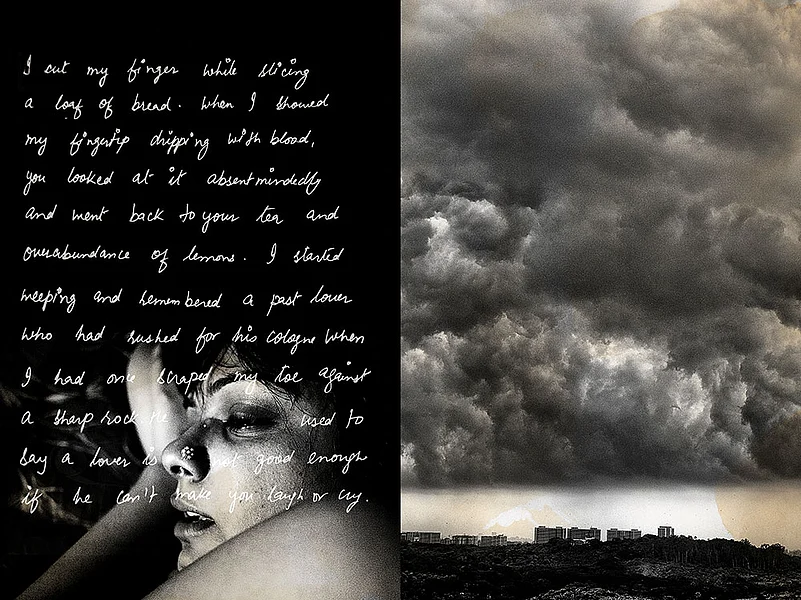‘I’ll Be Looking At The Moon But I’ll Be Seeing You was initiated by me (Hari Katragadda) on the expressions and registers of love through a protagonist, my partner Shweta. Her memories intersect and alter the sanctity of linear time, transforming their relationship through both lived and imagined experiences.
The initial impetus was the opening scene of Jean Luc-Godard라이브 바카라 Le Mépris (1963) in which Brigitte Bardot runs a roster of each of her body parts for Michel Piccoli, who plays her husband. “Do you see my feet in the mirror? Think they’re pretty?” “Very.” “You like my ankles? And my knees, too?” “I really like your knees.” “And my thighs?” “Your thighs, too.” When every part of her body is done, she concludes, “then you love me totally.” To which Piccoli replies, “I love you totally, tenderly, tragically.” So the pictures of body parts in our book are a direct homage to this scene, but we also wanted to enquire about the nature of love and to extend from this love of body parts.









There is a genre of poetry in Tamil Sangam Literature called the Tinai poetry in which the Tamil land was divided into five physiological divisions including marutam, neytal and kurinji. Each division was associated with a particular occupation, landscape and an aspect of love. This concept is exciting because it connects love to landscapes, which is something that we also explore in the book.
The idea to inscribe the self within an already existing text came from The English Patient by Michael Ondaatje in which the character of Almasy sticks geographical maps, notes about different kinds of wind storms, as well as confessions of his impossible, illicit love for Katherine in Herodotus’ Histories. There are also influences from the gothic short stories by Naiyer Masud in which characters often went to sleep and you could not differentiate between the real and dream worlds. Also his short stories did not have plots, but ghosts of plots and communicated meaning through the ‘theatre of sensation—a direct appeal to the body’.
Shweta was a reluctant and difficult subject—she hated to be photographed and even without seeing the final photograph she used to be convinced that it was a bad picture or not a correct representation of herself. She thought that the images did not reflect the inner landscapes—the world of imagination, experience of love and pining stored within a body—and she wanted them to leak out on the surface of the images. Rather than external interventions these smears, stains suggest that the bodies and objects and spaces have secreted them through their skins that ultimately threaten to devour them. Like the moon that indexes both absence and presence, wholeness and emptiness—the book라이브 바카라 central character is a haunting figure on the verge of disappearance and subsequent reappearance.
(Views expressed are personal)
Hari Katragadda is a visual artist whose work explores communities, environment and personal memories using photography, text and drawings
Shweta Upadhyay is an arts journalist based in Mumbai
(This article appeared in 바카라라이브 바카라 Valentine라이브 바카라 Day 2025 special issue on love and loneliness in the era of technology. It was published in print as 'Half Moon')

















